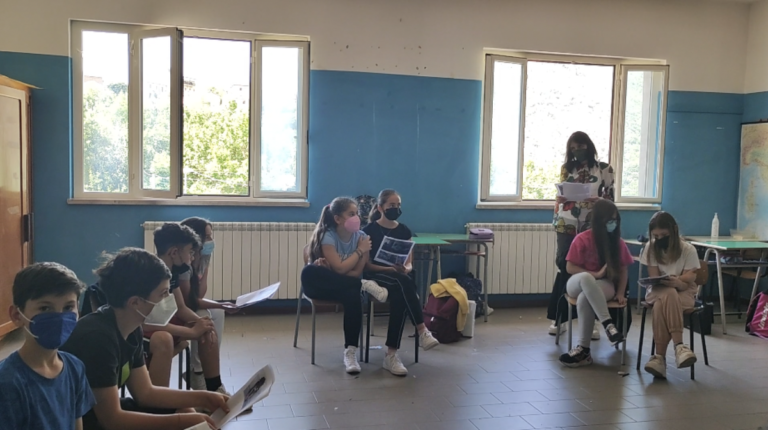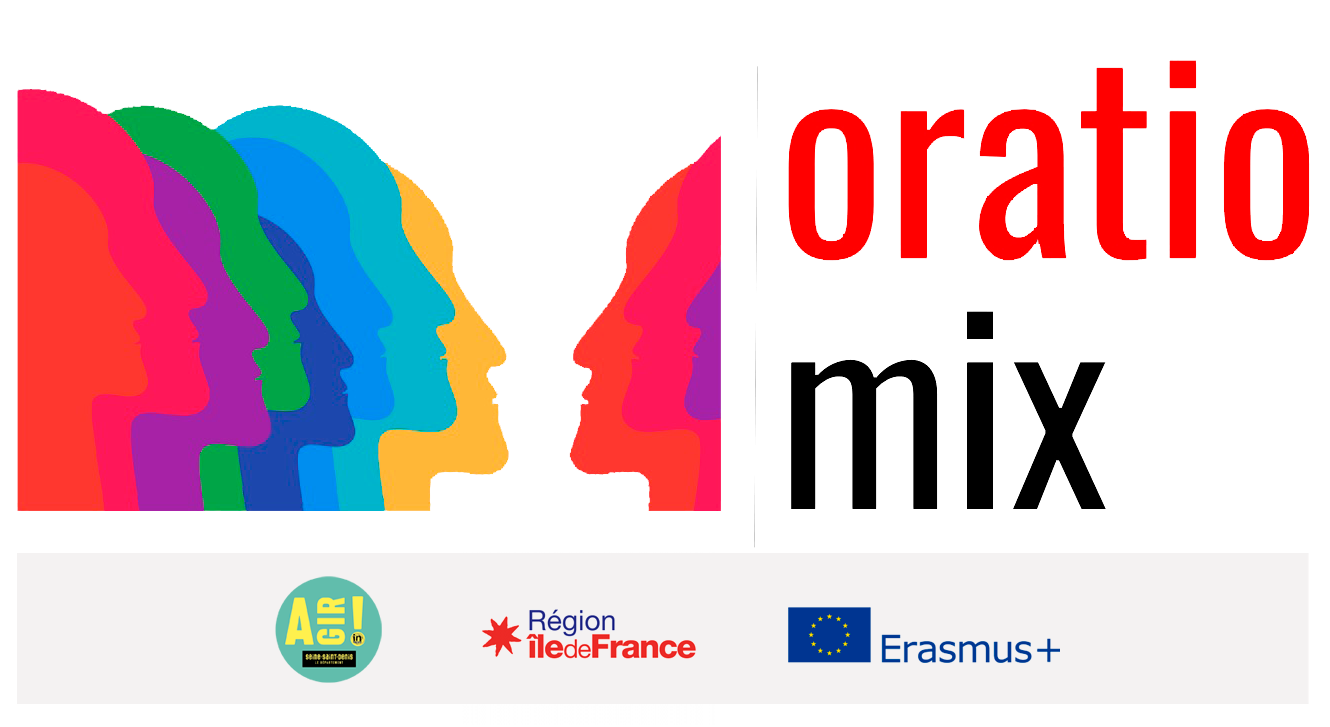Workshop 1 : Preparation
Setting up: what do we need?
– A workspace: the classroom is ideal for this preparatory workshop.
– The album Une Soupe aux cailloux by Anaïs Vaugelade
Participants
The methodology is aimed at nursery pupils aged 4 to 7, with a maximum group size of 25 pupils.
Contributors
School teachers, educators, drama teachers.
Aims of this workshop
Establish a framework for working with the students
To explore concepts specific to the performing arts
Time required
45 minutes
How it works
This workshop uses a participatory presentation with the students.
Aim
At the end of the session, the children will have :
- understood the rules to be observed to ensure that the workshops run smoothly during the time devoted to them
- acquired vocabulary relating to the arts and entertainment.
- The pupils’ practice of new techniques will enhance their personal development and communication skills.
1. Discussion
We start by explaining the rules of the workshops:
- We listen to each other without comment and wait for the speaker to give us the floor, as in class. However, if you don’t agree with what a classmate has just said, you can ask for the floor.
- we try to participate! As in a game, if a player doesn’t play when it’s his turn, he risks blocking the game for everyone else. However, it’s up to the facilitator to use his or her creativity to get round the reluctance of the shyest players and find a way of getting them to take part without rushing them! We’ll be suggesting alternatives throughout the sessions.
- constructive criticism! You can say that you don’t like what a classmate has done or that you don’t agree with them, as long as you explain why and suggest a solution that would enable the classmate to improve.
we also express what we like! It’s important to be able to tell others what you like or agree with. This exercise is not always easy for the students, so the teacher can be vigilant on this point and encourage them to do so.

The teacher then initiates a discussion on the performing arts and the world of storytelling. This is followed by questions to the pupils:
What is theatre? Where is it performed? Where can you see it? What do we call those who watch the show? What are those on stage called? What is the difference between an actor and a character?
What are fairy tales? Where can I find them? What is the difference with films and cartoons? What is a hero (not to be confused with a superhero)? What fairy tales do you know? Who can be a hero in fairy tales? What other characters do we have? Who are the villains? Who are the secondary characters? Where do the stories in fairy tales take place?
He/she should bounce off the students’ answers and frequently ask them if everyone agrees with what has been said, or if anyone has anything to add.
We recommend that you illustrate your participatory talk with illustrations and photographs that will help students who have never been to a theatre to visualise the concepts you are discussing. For example, you could show photos of different theatres (contemporary or Italian-style) and of the layout of a big top. You can also show extracts from shows on video.
2. History
The teacher reads the album Une Soupe aux cailloux by Anaïs Vaugelade.
He/she then checks that all the children have understood the story.
Who are the characters? Who is arriving? Why does the hen hesitate? Why do the others come to the hen’s house in turn?
What’s in the pebble soup? Where do all the ingredients come from?
Why are they happy with the meal?
What does the wolf do at the end of the story? Why does he do it? And what do you think?
3. End of session
You can close the session by explaining to the pupils the frequency of the workshops (weekly, fortnightly, etc.) and that the next sessions will take place outside the classroom (or in the classroom set up differently). However, this does not mean that the rules of respect and listening will change.
